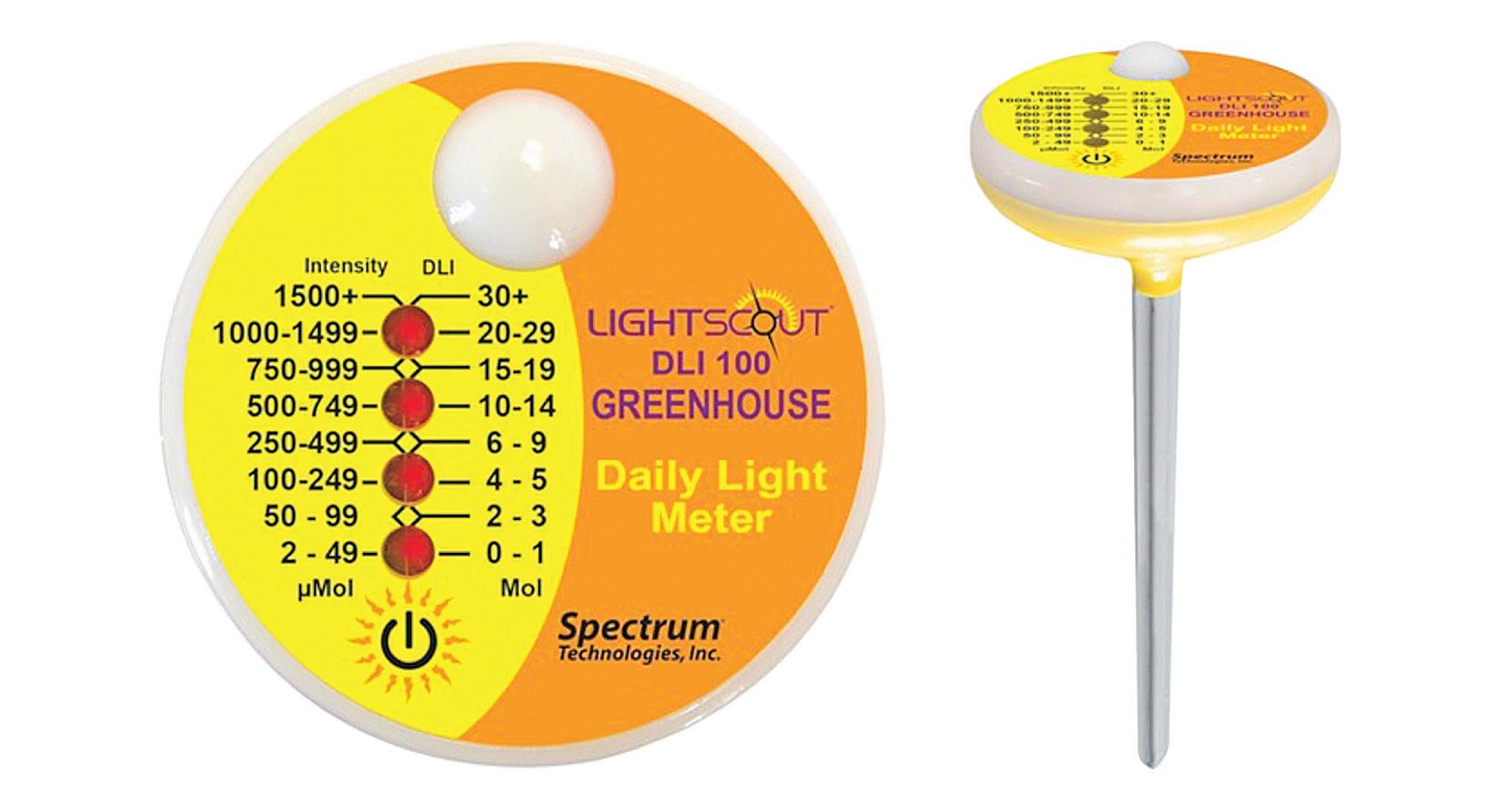
9 minute read
Shade and Implications for Turfgrass Health
By Casey Reynolds, Ph.D., Executive Director at Turfgrass Producers International Shade
Managing turfgrasses in shade can be one of the more challenging aspects encountered by turfgrass managers everywhere. Unlike weeds, insects, or diseases you can’t simply spray something to correct it. Furthermore, who doesn’t love a good shade tree on a hot summer day? Privacy fences, homes or other structures, trees, shrubs, etc. all have the capacity to block sunlight from reaching turfgrasses and thereby create shade. In this brief article, we’ll explore the fundamentals behind shade, its impact on turfgrass health, and recent research designed to determine exactly how much sunlight is necessary to meet the needs of various turfgrass species.
Advertisement
In order to understand shade, it’s important to first understand the sunlight that it’s blocking. Sunlight has properties of both particles and waves. Particles of light called photons contain energy that is delivered in various wavelengths which are defined by the distance between successive crests. The electromagnetic spectrum includes the entire range of wavelengths of electromagnetic radiation delivered to the Earth’s surface by the sun. Unfortunately, not all of these wavelengths are useful for plant growth. In fact, photosynthetically active radiation (PAR), which is what drives growth in plants, makes up a very small amount of this spectrum. The entire 300 nanometer (nm) range of PAR from 400–700 nm, when compared to the entire electromagnetic spectrum, is equivalent to the width of a dime when compared to the distance in driving from New York, NY to Los Angeles, CA. This tiny portion of light is all that’s useful to plants. As a result, one can imagine that it doesn’t take much additional shade from cloud cover, trees, homes, etc. to limit turfgrass growth in shade.
Turfgrasses, like all plants, require sunlight in order to supply energy to support photosynthesis, which literally means “synthesis using light”. As photosynthesis occurs, solar energy is used to drive the synthesis of carbohydrates and oxygen from carbon dioxide and water. In shaded environments, photosynthesis is reduced which can result in decreased growth rates of turfgrasses, thinning, and even death. This is because plant survival dictates that net photosynthesis (carbon gains) exceed respiration (carbon losses) in order for the plant to continue to grow, produce new tissues, store carbon, etc. The point at which this pendulum swings in either direction is called the light compensation point, or the point at which photosynthetic CO 2 uptake exactly balances CO 2 release through respiration.
Generally speaking, cool-season turfgrasses reach light saturation, the point at which any additional sunlight cannot be effectively used for photosynthesis, at approximately 50% of full sunlight. By contrast, warm-season turfgrasses typically require full sunlight to reach light saturation. This introduces a series of questions such as “how much full sunlight do various turfgrass species and varieties need to grow?”, “is afternoon sun better than morning sun?”, “is 4 hours of shade/partial sun better or worse than 2 hours of full sun?”, “how do we measure it?”, and so on.
Light intensity varies by location, diurnal cycle, time of year, atmospheric conditions, cloud cover, shade, etc. Sometimes this is measured as photosynthetic photon flux density (PPFD) in units of μmol m -2 s -1 , which provides an instantaneous value for how much PAR is reaching a leaf’s surface. However, the item of most interest to turfgrass researchers is how much photosynthetically active radiation (PAR) strikes a surface throughout the course of a day, season, or year. This integrates PPFD into a term called the Daily Light Integral (DLI) and is much more useful for quantifying shade tolerance in plants. They are also useful because there are simple, inexpensive devices capable of measuring DLI that are commercially available to turfgrass managers.
Publicly available data on DLIs, such as the information in Figure 2, illustrate the amount of PAR striking the Earth’s surface at various points in the United States at different times of year. One can see from this data the substantial differences that exist based on location and season. For example, during the spring months there can be 46% more PAR in the desert southwest than the northeast United States and from January to August in Houston, TX the amount of PAR increases by 142%. These types of baseline data are important for calculating percent reductions using light meters under various shade levels.
Much of the current turfgrass shade research with regard to determining minimum required DLIs is focused primarily on warm-season turfgrasses. Coolseason turfgrasses are typically much more shade tolerant than warm-season turfgrass species, so generally speaking DLIs for cool-season turfgrass are much lower than those for many warm-season turfgrasses. Within cool-season species for use on lawns, the generally accepted ranking of shade tolerance from highest to lowest is Fine fescue, Tall fescue, and Kentucky bluegrass. Reported DLIs for several warm-season species and cultivars are reported in Table 2. Bermudagrass, as expected, has the highest DLIs ranging from 13.9 – 18.6 mol m -2 d -1 in the spring/fall and 18.6 – 22.4 mol m -2 d -1 in the summer. This was followed by Centipedegrass (13.4 – 14.7), Seashore paspalum (11.1 –13.0), St. Augustinegrass (10.6 – 11.5), and Zoysiagrass (9.7 – 11.3). Therefore, for clients dealing with substantial shade who want to use warm-season turfgrasses, zoysiagrass and St. Augustinegrass offer the highest shade tolerance (lowest DLI) and greatest likelihood for success. Within zoysiagrass varieties, additional research has shown that fine textured species that are often interspecific crosses of Z. japonica and Z. matrella or Z. pacifica typically have better shade tolerance than coarse textured varieties of Z. japonica. However, it is worth noting that in the northern parts of the transition zone (including Tennessee), the lack of cold tolerance in St. Augustinegrass and fine-textured zoysiagrass needs to be considered during turfgrass selection.
While the order in which these warmseason turfgrass species ranked with regard to shade tolerance is not groundbreaking, this type of research begins to establish known DLI values that turfgrass producers, managers, and clients can measure for success. Reliable, relatively inexpensive light meters (Figure 3) can be purchased online that will allow users to document DLIs in their lawns, stadiums, or golf courses to determine which turfgrass species and varieties are best suited for use. Future research is also currently being conducted to relate these known DLIs to hours of morning or afternoon sun such that new guidelines can be designed to determine the hours of sunlight needed for adequate growth.
••••••
Table 1: Relative shade tolerance of turfgrasses
Gardner and Goss, 2013. Management of Turfgrass in Shade and Turgeon, 1995.
••••••
Tolerance: Highly Shade Tolerant
Cool-season species: Annual bluegrass, Fine fescue, Tall fescue
Warm-season species: None
••••••
Tolerance: Shade Tolerant
Cool-season species: Roughstalk bluegrass
Warm-season species: Centipedegrass, Seashore paspalum, St. Augustinegrass, Zoysiagrass
••••••
Tolerance: Shade Intolerant
Cool-season species: Kentucky bluegrass
Warm-season species: Bermudagrass
••••••
Tolerance: Highly Shade Intolerant
Cool-season species: Creeping bentgrass, Perennial ryegrass
Warm-season species: Bahiagrass, Buffalograss, Carpetgrass
••••••
It is important to remember that most, if not all, turfgrass species will perform best in full sun. Shade tolerance varies among species and cultivar and selecting the appropriate one for use is the first line of defense in managing healthy turfgrass in moderate to dense shade. Also, next time you see your shadow on the lawn remember that the particles of sunlight hitting your back just traveled 93 million miles only to be obstructed from hitting your turfgrass in the last few feet thanks to you!
Tips for growing turfgrass in shade
Select the appropriate species and cultivar. Fine fescue provides great shade tolerance for cool-season grasses but Tall fescue and Kentucky bluegrass are moderately shade tolerant as well, and mixtures of these various coolseason species are often successful in shade. Pre-packaged “shade mixtures” often have varieties with improved shade tolerance.
St. Augustinegrass and Zoysiagrass provide the highest shade-tolerance in warm-season turfgrasses but their lack of cold tolerance often limits their use in the northern transition zone. Medium to coarse-textured zoysias typically have the highest shade tolerance among these species.
Shade source matters: Trees are more likely to alter light quality (red light, blue light, red/far red ratios) than buildings or other structures which primarily reduce light quantity
Tree species matters: Evergreen trees provide more shade than deciduous trees
Mowing height: Mow turfgrasses on the upper end of their recommended height range
Fertilization: Reduce nitrogen applications. Excessive leaf growth comes at the expense of roots and other stored carbon sources.
Traffic: Limit traffic when possible, turfgrasses under shade grow less vigorously and therefore won’t recover as rapidly as in full sun
Plant growth regulators: PGRs have been shown to increase turfgrass quality in closely-mowed turf when grown under moderate shade.
••••••
Table 2: Reported DLI values (mol m -2 d -1 ) for various warm-season turfgrass species.
1 data not available
2 Data compiled from Bunnell et al. (2005) Glenn et al. (2012) and Zhang et al. (2017)
••••••
Species/Cultivar: Tifeagle bermudagrass
Spring/Fall: n/a 1
Summer: 32.6
••••••
Species/Cultivar: Tifway bermudagrass
Spring/Fall: 17.4 – 18.6
Summer: 21.4 – 22.4
••••••
Species/Cultivar: Celebration bermudagrass
Spring/Fall: 14.2 – 15.7
Summer: 19.5 – 20.2
••••••
Species/Cultivar: Tifgrand bermudagrass
Spring/Fall: 13.9 – 15.4
Summer: 18.6 – 20.9
••••••
Species/Cultivar: Tifblair centipedegrass
Spring/Fall: 13.4 – 14.7
Summer: 13.3 – 14.7
••••••
Species/Cultivar: Seadwarf seashore paspalum
Spring/Fall: 11.1
Summer: 13.0
••••••
Species/Cultivar: Captiva St. Augustinegrass
Spring/Fall: 10.8
Summer: 10.6
••••••
Species/Cultivar: Floratam St. Augustinegrass
Spring/Fall: 10.8
Summer: 11.5
••••••
Species/Cultivar: Palisades zoysiagrass
Spring/Fall: 10.5 – 11.3
Summer: 10.9 – 11.3
••••••
Species/Cultivar: Diamond zoysiagrass
Spring/Fall: 10.1 – 11.1
Summer: 11.0 – 11.1
••••••
Species/Cultivar: Jamur zoysiagrass
Spring/Fall: 9.7
Summer: 9.9
••••••

Figure 3: Commercially Available Light Meter for determining DLI.

Citations
Bell, G.E., T.K. Danneberger, and M.J. McMahon. 2000. Spectral irradiance available for turfgrass growth in sun and shade. Crop Sci. 40:189–195.
Bunnell, B. T., L. B. McCarty, J. E. Faust, W. C. Bridges, N. C. Rajapakse, and W. C. Bridges. 2005. Quantifying a daily light integral requirement of a ‘TifEagle’ bermudagrass golf green. Crop Sci. 45(2):p. 569-574.
Gardner, D. S. and R. M. Goss. 2013. Management of Turfgrass in Shade. P. 219-247. In. Stier et al. (ed.) Turfgrass: Biology, Use, and Management. Agron. Monogr. 56. ASA, CSSA, and SSSA. Madison, WI.
Glenn, B., J. Kruse, and J. B. Unruh. 2012. Daily light integral requirements for twelve warm-season turfgrasses. Int. Ann. Meet. p. 72111.
Korczynski, P.C., J. Logan, and J.E. Faust. Mapping Monthly Distribution of Daily Light Integrals across the Contiguous United States. HortTech. 12(1): 12-16.
Turgeon, A.J. 1995. Turfgrass Manage- ment. 4th ed. Prentice-Hall, Inc. Upper Saddle River, NJ.
Wherley, B.G., P. Skulkaew, A. Chandra, A.D. Genovesi, and M.C. Engelke. 2011. Low-input Performance of Zoysiagrass (Zoysia spp.) Cultivars Maintained under Dense Tree Shade. HortSci. 46(7):1033-1037.
Zhang, J., B. Gleen, J.B. Unruh, J. Kruse, K. Kenworthy, J. Erickson, D. Rowland, and L. Trenholm. 2017. Comparative performance and daily light integral requirements of warm-season turfgrasses in different seasons. Crop Sci. 57: 2273-2282.









